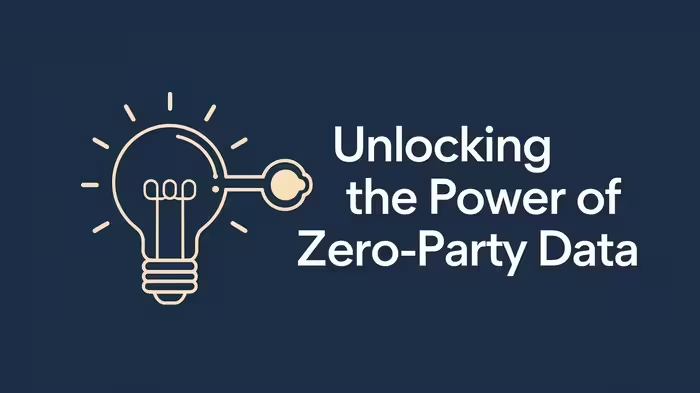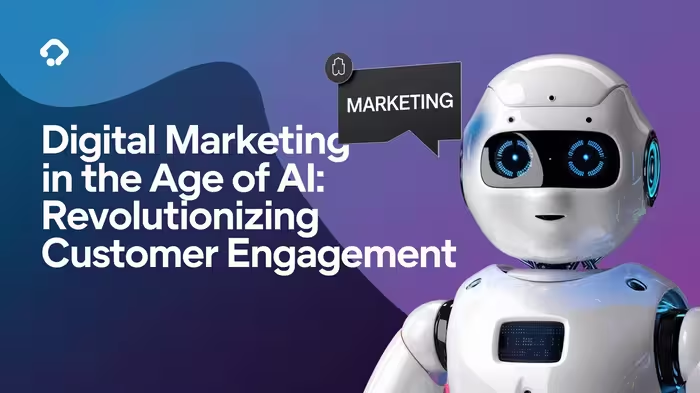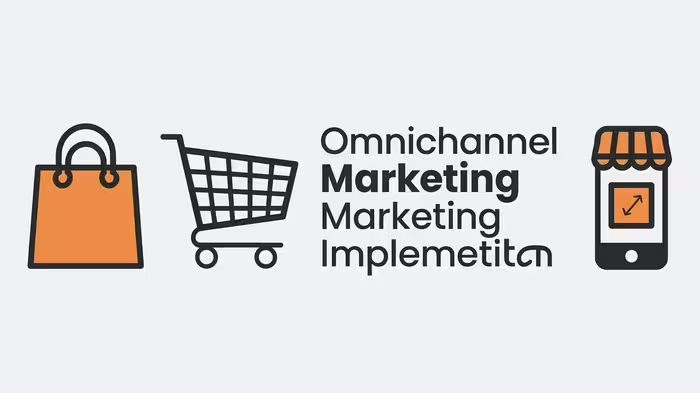In today’s digital landscape, where privacy concerns are at an all-time high and third-party cookies are crumbling, marketers are scrambling for new ways to understand and connect with their audience. Enter zero-party data – the golden ticket to building trust, delivering personalized experiences, and driving customer loyalty.
But how do you collect this valuable information without coming across as intrusive or annoying? Buckle up, because we’re about to dive into the world of zero-party data collection strategies that will transform your marketing game.
Understanding Zero-Party Data
Definition and Importance
Picture this: You’re at a party, and instead of eavesdropping on conversations or relying on mutual friends for information, your new acquaintances voluntarily share their interests, preferences, and needs with you.
That’s essentially what zero-party data is in the digital world. It’s information that customers intentionally and proactively share with a brand, often in exchange for a better experience or perceived value.
But why is it so important? Well, in a world where consumers are increasingly wary of how their data is collected and used, zero-party data stands out as a beacon of trust and transparency. It’s the difference between making educated guesses about your customers and hearing directly from them about what they want and need.
Zero-Party vs. First-Party Data
Now, you might be thinking, “Wait a minute, isn’t this just first-party data?” Not quite. While both types of data are collected directly from customers, there’s a crucial distinction:
- First-party data is information you gather through customer interactions with your website, app, or product. It’s like observing someone’s behavior at that party we mentioned earlier.
- Zero-party data, on the other hand, is explicitly provided by the customer. It’s as if they walked up to you and said, “Hey, let me tell you about myself!”
This distinction makes zero-party data incredibly valuable because it’s coming straight from the horse’s mouth, so to speak.
Benefits of Zero-Party Data
The benefits of zero-party data are like a treasure trove for marketers:
- Accuracy: Since customers provide the information themselves, it’s more likely to be accurate and up-to-date.
- Relevance: You’re collecting data points that customers deem important enough to share, ensuring relevance.
- Trust-building: By asking for information directly, you’re fostering a transparent relationship with your customers.
- Personalization power: With explicit preferences, you can create hyper-personalized experiences that truly resonate.
- Compliance-friendly: Zero-party data is freely given, addressing many privacy concerns and regulatory requirements.
Building a Zero-Party Data Strategy
Setting Clear Objectives
Before you start asking customers to spill the beans about themselves, you need to know why you’re asking and what you’ll do with that information. Are you looking to improve product recommendations? Tailor your email content? Or perhaps segment your audience more effectively?
Setting clear objectives is like creating a roadmap for your zero-party data journey. It helps you focus on collecting only the most relevant information and ensures you have a plan to put that data to good use.
Identifying Valuable Data Points
Not all data is created equal. When it comes to zero-party data, you want to focus on information that will truly move the needle for your business and provide value to your customers. Think about data points like:
- Product preferences
- Purchase intentions
- Communication preferences
- Personal goals or challenges
- Lifestyle information
The key is to identify data that will help you serve your customers better, not just satisfy your curiosity.
Choosing Collection Methods
Now that you know what you want to collect, it’s time to figure out how to collect it. This is where creativity meets strategy. Your collection methods should be:
- Engaging and fun for the customer
- Seamlessly integrated into the user experience
- Appropriate for the type of information you’re seeking
We’ll dive deeper into specific techniques in the next section, but remember: the best collection method is one that feels natural and valuable to your customers.
Effective Zero-Party Data Collection Techniques
Interactive Quizzes and Surveys
Who doesn’t love a good quiz? Interactive quizzes and surveys are like the Swiss Army knife of zero-party data collection. They’re versatile, engaging, and can be tailored to almost any industry or goal.
For example, a skincare brand might create a “Find Your Perfect Routine” quiz that asks about skin type, concerns, and lifestyle factors. Not only does this provide valuable data for personalized product recommendations, but it also offers immediate value to the customer.
Tips for creating effective quizzes and surveys:
- Keep them short and sweet (aim for 5-7 questions max)
- Use a mix of question types to keep things interesting
- Offer immediate value, like personalized results or recommendations
- Make them visually appealing and mobile-friendly
Preference Centers
Preference centers are like giving your customers the remote control to their experience with your brand. They allow users to explicitly state their interests, communication preferences, and desired interactions.
A well-designed preference center might include options for:
- Email frequency and content topics
- Product categories of interest
- Preferred communication channels
- Special dates (birthdays, anniversaries)
The beauty of preference centers is that they put the power in the customer’s hands, fostering a sense of control and trust.
Social Media Polls and Interactions
Social media platforms are a goldmine for zero-party data collection. They offer casual, low-pressure ways to engage with your audience and gather insights. Think Instagram story polls, Twitter surveys, or Facebook quiz apps.
The key here is to make your interactions feel like a natural part of your social media presence. Ask questions that are relevant to your brand but also interesting to your followers. For instance, a travel company might ask, “What’s your dream vacation destination?” or “Beach or mountains?”
Gamification
Who says data collection can’t be fun? Gamification turns the process into an enjoyable experience for your customers. This could be anything from a simple spin-to-win wheel for email signups to more elaborate loyalty program challenges.
The trick with gamification is to strike a balance between fun and value. Your games should be entertaining enough to engage users but also structured to collect meaningful data.
Progressive Profiling
Think of progressive profiling as the “slow and steady” approach to zero-party data collection. Instead of asking for everything at once, you gradually build a customer profile over time through small, manageable interactions.
This might look like:
- Asking for one additional piece of information during each login
- Gradually expanding preference options as customers engage more with your brand
- Using chatbots to casually gather information during support interactions
Progressive profiling is like having a series of pleasant conversations with a friend, rather than an interrogation. It’s less overwhelming for the customer and allows you to build a comprehensive profile over time.
Incentivizing Data Sharing
Personalized Experiences
One of the most powerful incentives for sharing zero-party data is the promise of a more personalized experience. It’s like telling your customers, “The more you share, the better we can serve you.”
Be explicit about how the information will be used to enhance their experience. For example:
- “Help us tailor your shopping experience by sharing your style preferences”
- “Get news and updates that matter to you by telling us your interests”
Exclusive Content or Offers
Everyone loves feeling special. Offering exclusive content, early access to sales, or special discounts in exchange for zero-party data can be a powerful motivator.
This could look like:
- “Unlock our VIP content by completing your profile”
- “Get early access to our holiday sale when you share your gift-giving preferences”
The key is to make the reward feel proportional to the information shared.
Loyalty Programs
Loyalty programs are the perfect vehicle for ongoing zero-party data collection. They provide a framework for continuous engagement and data sharing, with clear benefits for the customer.
Consider structuring your loyalty program to encourage regular updates of preferences and information. For instance, members might earn extra points for completing quarterly surveys or updating their profiles.
Implementing Zero-Party Data Collection
Designing User-Friendly Interfaces
The way you ask for information is just as important as what you’re asking. Your data collection interfaces should be:
- Clean and uncluttered
- Easy to navigate
- Visually appealing
Think about using progress bars for longer forms, breaking information requests into logical sections, and using clear, concise language.
Optimizing for Mobile Devices
In our mobile-first world, it’s crucial that your zero-party data collection methods work seamlessly on smartphones and tablets. This means:
- Responsive design that adapts to different screen sizes
- Touch-friendly interfaces (think big buttons and easy-to-tap options)
- Minimizing typing required on mobile devices (use dropdowns, sliders, or pre-filled options where possible)
Ensuring Transparency and Trust
Trust is the foundation of zero-party data collection. Be upfront about:
- Why you’re collecting the information
- How it will be used
- How it will benefit the customer
Consider creating a simple, jargon-free privacy policy that clearly outlines your data practices. And always provide an easy way for customers to update or delete their information.
Analyzing and Activating Zero-Party Data
Data Management and Integration
Collecting zero-party data is just the first step. To truly unlock its power, you need to integrate it with your existing systems and data sources. This might involve:
- Connecting your zero-party data collection tools with your CRM
- Ensuring data flows seamlessly between your marketing automation platform and your e-commerce system
- Creating a single customer view that combines zero-party, first-party, and other data sources
The goal is to create a holistic view of each customer that can inform all your marketing efforts.
Segmentation and Personalization
With rich zero-party data at your fingertips, you can create highly targeted segments and deliver truly personalized experiences. This could include:
- Tailored email content based on stated interests and preferences
- Personalized product recommendations on your website
- Customized app experiences that reflect individual user goals
The key is to use the data to create experiences that feel uniquely relevant to each customer.
Predictive Analytics
While zero-party data tells you about a customer’s current preferences and intentions, predictive analytics can help you anticipate future needs and behaviors. By combining zero-party data with behavioral data and machine learning algorithms, you can:
- Predict likely future purchases
- Anticipate when a customer might be at risk of churning
- Identify opportunities for upselling or cross-selling
This forward-looking approach allows you to stay one step ahead in serving your customers.
Overcoming Challenges in Zero-Party Data Collection
Balancing Frequency and Value
One of the biggest challenges in zero-party data collection is finding the right balance between gathering enough information and not overwhelming your customers. It’s like seasoning a dish – you want enough to enhance the flavor, but not so much that it overpowers everything else.
To strike this balance:
- Space out your data collection efforts over time
- Always tie data requests to clear customer benefits
- Monitor engagement rates and adjust your strategy accordingly
Maintaining Data Accuracy
People change, and so do their preferences and circumstances. Keeping zero-party data accurate and up-to-date can be a challenge. Consider:
- Implementing regular “profile update” reminders
- Using interactions (like purchases or support tickets) as opportunities to confirm or update information
- Allowing customers to easily view and edit their data at any time
Scaling Collection Efforts
As your customer base grows, scaling your zero-party data collection efforts can become complex. Automation will be your friend here. Look for ways to:
- Integrate data collection into standard customer journeys
- Use AI and machine learning to personalize and optimize collection methods
- Leverage technology platforms that can handle large-scale data collection and management
Future Trends in Zero-Party Data
As we look to the future, several trends are likely to shape zero-party data collection:
- AI-Powered Conversations: Chatbots and virtual assistants will become more sophisticated, engaging customers in natural conversations to gather zero-party data.
- Augmented and Virtual Reality: These technologies will offer new, immersive ways for customers to share preferences and information.
- Blockchain for Data Ownership: We may see the rise of blockchain-based solutions that give customers more control over their data and how it’s shared.
- Voice-Activated Data Sharing: As voice assistants become more prevalent, sharing zero-party data could become as easy as having a conversation.
- Ethical AI and Data Use: There will be an increased focus on using AI ethically to collect and analyze zero-party data, with transparency becoming even more critical.
Case Studies: Successful Zero-Party Data Campaigns
Let’s look at a few hypothetical examples of brands successfully leveraging zero-party data:
- FashionForward: This clothing retailer created a “Style Profile” quiz that asks customers about their fashion preferences, body type, and lifestyle. The results are used to provide personalized outfit recommendations and tailored email content. Since implementing this strategy, FashionForward has seen a 40% increase in email engagement and a 25% boost in average order value.
- HealthyHabits: A wellness app that uses gamification to encourage users to share their health goals and daily habits. Users earn points for updating their profiles and completing health-related challenges. This approach has led to a 60% increase in daily active users and improved user retention by 35%.
- TravelDreams: A travel booking site that implemented a preference center allowing users to specify their dream destinations, preferred travel styles, and budget ranges. This data is used to create personalized travel packages and alert users to relevant deals. The result? A 50% increase in booking conversions and a 30% rise in customer satisfaction scores.
These case studies demonstrate the power of creative, value-driven approaches to zero-party data collection.
Conclusion
Zero-party data collection is not just a trend – it’s a fundamental shift in how brands build relationships with their customers. By prioritizing transparency, value exchange, and personalization, you can create a win-win situation where customers feel understood and appreciated, while your brand gains invaluable insights to drive growth and loyalty.
Remember, the key to successful zero-party data collection lies in creativity, consistency, and a genuine commitment to using that data to improve the customer experience. It’s about building a dialogue with your customers, not just a database.
As you embark on your zero-party data journey, keep experimenting, keep listening to your customers, and above all, keep focusing on creating value. The brands that master this art will be the ones that thrive in the privacy-first, customer-centric future of marketing.
FAQs
- What’s the main difference between zero-party data and other types of customer data?
Zero-party data is information that customers intentionally and proactively share with a brand, often in exchange for a better experience. Unlike first-party data (which is observed behavior) or third-party data (which is purchased from external sources), zero-party data comes directly from the customer, making it highly accurate and valuable. - How often should I ask customers for zero-party data?
The frequency of zero-party data collection should be balanced with the value you’re providing. As a general rule, space out your requests and always tie them to clear benefits for the customer. Consider using progressive profiling to gather information gradually over time, rather than all at once. - What if customers are reluctant to share their data?
If customers are hesitant to share information, focus on clearly communicating the benefits of sharing data, such as improved personalization or exclusive offers. Ensure your data collection methods are transparent, and always give customers control over their data. Sometimes, offering a small incentive or making the process more engaging through gamification can help overcome reluctance. - How can small businesses implement zero-party data strategies with limited resources?
Small businesses can start with simple, cost-effective methods like:
- Creating short quizzes or surveys using free or low-cost online tools
- Leveraging social media polls and interactions
- Implementing a basic preference center on their website or in email communications
- Using chatbots for casual data collection during customer interactions
The key is to start small, focus on collecting the most valuable data points, and gradually expand your efforts as you see results.
- How do I ensure the zero-party data I collect remains accurate over time?
To maintain data accuracy:
- Regularly prompt customers to review and update their information
- Use significant interactions (like purchases or support requests) as opportunities to confirm data
- Implement a preference center where customers can easily update their information at any time
- Consider offering incentives for keeping profiles up-to-date, such as loyalty points or exclusive content
Remember, keeping data fresh is an ongoing process, not a one-time effort.


